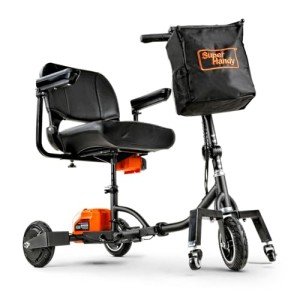Understanding Mobility Aids: Enhancing Independence and Quality of Life
As society continues to age and people significantly look for ways to maintain self-reliance, the need for mobility aids has actually never been more important. Mobility aids, which incorporate a series of devices created to help people with walking or walking around, play a vital function in promoting mobility, enhancing security, and enhancing total lifestyle. This blog post will check out the different types of mobility aids, their advantages, factors to consider for choice, and answer some regularly asked questions.
Kinds Of Mobility Aids
Numerous mobility aids are available, each created to attend to particular needs. The following table sums up some of the most common kinds of mobility aids and their functions.
| Type of Mobility Aid | Description | Best Suited For | Key Features |
|---|---|---|---|
| Walking sticks | A handheld stick offering assistance and balance. | Individuals who need very little support. | Light-weight, portable, adjustable height. |
| Walkers | Four-legged frames providing stability. | Those needing significant assistance while walking. | Foldable, some with wheels, added safety functions. |
| Rollators | Wheeled walkers with a seat for resting. | People requiring mobility with the alternative to rest. | Brakes, baskets for individual products, adjustable height. |
| Wheelchairs | Chairs with wheels for people with limited mobility. | Those unable to stroll or needing substantial support. | Handbook or powered choices, customizable seating. |
| Scooters | Motorized devices for bigger distances. | Individuals with minimal stamina however requiring self-reliance. | Various sizes and styles, frequently easily transportable. |
| Crutches | Support devices positioned under the arms or lower arms. | Individuals recovering from lower limb injuries. | Adjustable, lightweight, requires upper body strength. |
| Stairlifts | Mechanical devices for moving in between floorings. | Users dealing with challenges in multi-level homes. | Personalized for different staircases, automated. |
Advantages of Mobility Aids
Mobility aids provide an array of advantages that can considerably enhance the lives of people dealing with mobility obstacles. Some noteworthy advantages consist of:
- Increased Independence: Mobility aids empower people to move easily without counting on others for support, consequently enhancing their confidence and self-esteem.
- Enhanced Safety: Using mobility aids can minimize the danger of falls and injuries, particularly for older adults or those with balance problems.
- Enhanced Quality of Life: By facilitating mobility, people can engage in social activities, attend occasions, and take pleasure in life more fully, contributing to better psychological and mental health.
- Rehabilitation Support: After surgical treatment or injury, mobility aids offer required assistance and stability, helping in recovery and rehab processes.
- Ease of access: Many mobility aids are developed to be utilized both inside your home and outdoors, making sure that people can browse various environments with ease.
Factors to Consider When Choosing Mobility Aids
Picking the suitable mobility aid needs mindful consideration of numerous aspects, including:
| Factor | Factors to consider |
|---|---|
| User's Needs | Examine the level of mobility required; consider whether the user requires short-term or long-lasting assistance. |
| Physical Limitations | Examine the user's strength, balance, and coordination to determine the best kind of aid. |
| Setting | Consider the main environments where the aid will be utilized, such as home, outdoors, or specific surfaces. |
| Weight and Portability | Guarantee that the chosen gadget is manageable concerning mobility and storage, especially for outdoor usage. |
| Budget | Mobility aids can be found in a series of costs; consider insurance coverage and readily available funding choices. |
| Adjustability | Pick aids that can be adjusted for height and comfort to accommodate growth or altering requirements. |
Frequently Asked Questions About Mobility Aids
1. How do I know if I require a mobility aid?
Lots of factors can signify the requirement for a mobility help, such as difficulty strolling or stabilizing, fatigue while standing, or a current surgical treatment affecting mobility. Consulting with a healthcare expert can provide assistance customized to private requirements.
2. What kinds of mobility aids are covered by insurance?
Protection varies between insurers, but a lot of supply choices for durable medical equipment, which normally consists of wheelchairs, walkers, and some types of canes. Talk to your insurance coverage service provider for particular coverage info.
3. Can mobility aids be utilized outdoors?
Yes, numerous contemporary mobility aids are created for outside use. foldable scooters , scooters, and some walkers are geared up with features for stability and ease of use on different terrain.
4. How do I keep my mobility help?
Regular maintenance involves examining for any wear and tear, making sure that parts such as wheels, brakes, and frames are functioning properly, and cleaning up the devices as required. Following the manufacturer's guidelines is essential for security.
5. Is there a danger of becoming reliant on mobility aids?
While some users may become reliant on mobility aids, they are developed to promote independence and mobility. Slowly using a mobility help can boost self-confidence and aid retain physical strength and coordination.
Mobility aids are indispensable tools that empower people to overcome physical obstacles, promoting independence and boosting lifestyle. By comprehending the various kinds of mobility aids readily available, their benefits, and crucial elements for consideration, households and caretakers can make informed choices that best meet the requirements of their loved ones. With the right support, those with mobility challenges can lead fulfilling and active lives, complimentary to check out the world around them.

